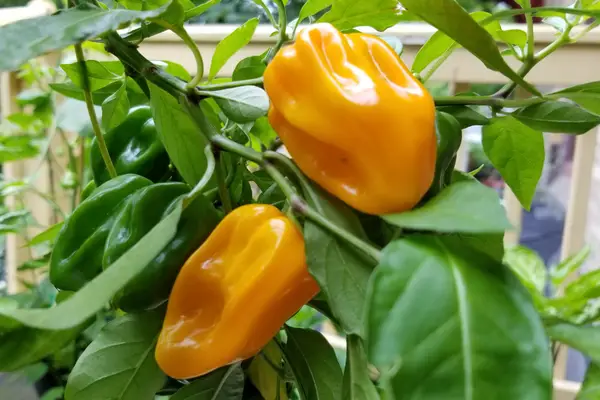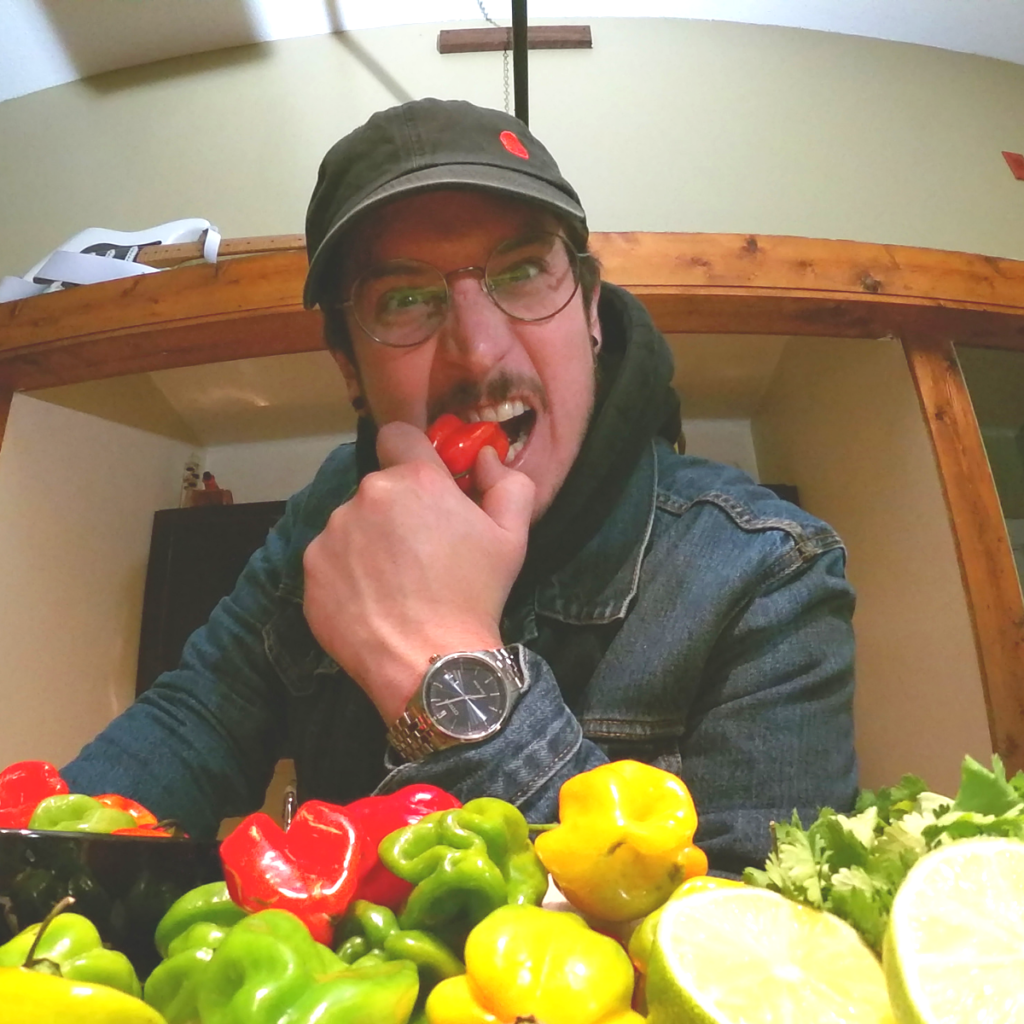Saving pepper seeds from your hot pepper pods is a great way to ensure you always have pepper plants growing. Every year when your plants produce peppers, they also produce a ton of seeds that can be used to grow next year’s plants.
Let’s say you have a Habanero plant you want to grow again. Saving some seeds from this year’s crop is a good way to get a head start. Plus, you’ll reduce costs since you won’t have to buy seeds
You can harvest these seeds and give them to friends, sell them, or keep them in storage for future use. Harvesting seeds from pepper pods is easy, but there are a few important things to know before saving your hot pepper seeds.
This post contains affiliate links to products. I may receive a commission for purchases made through these links.
-Thanks!
Choosing The Right Pepper
In order to save viable seeds, you need to choose the right peppers.

Picking Ripe Peppers
Hot pepper seeds need time to mature in the pod. This is why it is important to select really ripe peppers to harvest seeds from.
There are a few tell-tale signs that a pepper pod is fully ripe.
The first sign is that the pod will have turned to the expected color our the variety you are growing. This is the first sign that a pepper pod is almost ready to harvest seeds from.
After you notice the color change, you have to let the pepper continue to ripen. Eventually, the pod will start to wrinkle and become softer.
A pre-ripe pepper will make a crunching sound if you squeeze it because the flesh of the pepper is so firm. A pepper ready for seed harvest will have a looser flesh that you can compress without hearing a crunch.
If your pepper pod shows both of these signs, your seeds are likely ready for harvest.
Open-Pollination and Hybrid Pepper Seeds
If the variety of pepper you are growing is a hybrid cross, the seeds from the parent are unlikely to produce peppers similar to their parent.
The pepper can become crossed through open pollination. Let’s say your peppers are growing in close proximity to each other. If you’re growing different varieties of peppers, it is possible for the pollen of one variety to pollinate the flowers of another variety. This results in cross-pollination.
When a pepper flower has been cross-pollinated, the pepper will look like that of the parent variety but the seeds may produce a pepper that looks and tastes completely different.
If you want your new pepper plants to grow true to type, you should hand pollinate or use blossom bags. Blossom bags will contain the flower so that only the pollen from that flower will pollinate the stigma. This helps to ensure that the pepper pod that grows will produce seeds true to the type of pepper plant.
Saving Seeds From Grocery Store Peppers
There are two reasons you shouldn’t save seeds from store-bought peppers.
The first reason is most store-bought peppers are not fully matured. Take jalapenos for example. Most jalapeno peppers I can find in the grocery store are green. Green jalapenos are peppers that are picked early as the jalapeno ripens to a red colour. This means the seeds won’t be fully matured.
Second, some grocery stores may carry GMO peppers that might have had their DNA modified. You can try to grow from these peppers but they are unlikely to grow peppers similar to the pods the seeds came from.
Harvesting Hot Pepper Seeds
Now that you’ve chosen the right pepper pods, it’s time to harvest the seeds.
Make sure you wear gloves while harvesting pepper seeds. The seeds and the pith of the pepper pod contain capsaicin which can be quite unpleasant when in contact with your eyes, nose, or other areas.
Trust me.
When your pepper pod is fully ripened, use some scissors to cut it from the pepper plant.
Bring it over to a clean cutting board and cut the bottom of the pepper off. Now roll the pepper between your fingers so the seeds fall out of the bottom. Do this until the trickle of seeds stops.
Cut the pepper in half to expose the rest of the seeds. The pith is the membrane to which the seeds are attached. Cut out the pith and the seeds will come out with it.
You could also just cut the pepper in half and scoop out the pith. Both methods work well.
If you see any seeds that look dark or rotten remove them.
Drying The Seeds
Drying your pepper seeds is even easier than harvesting them from the pod.
All you have to do is leave your seeds out on a plate for about a week. Room temperature and normal humidity should work. If your room is too humid it will take longer for the seeds to dry.
Every other day or so you should move the seeds around so they dry evenly.
You can test the seeds to see if they are dry with a sharp knife. Try to cut the seed in half. If the seed is dry it will crack and possibly split so fast it shoots out from under the knife.
The seed should crack rather than be squishy or bendy.
How to Store Your Seeds
When the seeds are dry, place them in small, airtight plastic baggies. Most pepper seeds look the same so make sure you label the bag with the variety of pepper.
Place your baggies in an airtight jar like Tupperware or a Mason jar. If you want to keep your seeds around for a long time, include a food-grade desiccant packet in the sealed jar. Place the sealed jar in the refrigerator and keep the temperature between 0C (35F) and 10C (50F).
When stored like this, the pepper seeds should last up to 5 years.
Mike P
Welcome to The Hot Sauce Guy! I’m Mike, your guide to the spicy world of hot sauces and the creator of Spicy Riffs Hot Sauce. From Canada, I share the hottest reviews, pepper-growing tips, and sauce recipes with a touch of rock and roll.
My passion? Crafting the perfect blend of heat and flavor. Whether you’re here for the fire or the flair, get ready for a journey into the world of spicy delights.
Let’s turn up the heat together!
About Us

